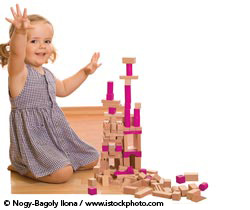Practice makes perfect
Add to My Folder
Adapting your planning and resources based on how you see the children play is vital to an effective learning environment, as Sally Featherstone explains

The crucial role of the adult in observing children’s learning has been evident for many years, but more work still remains to be done in reflecting on and using what is observed. Observations are vital as records of the past that register what children know, understand and can do, but this is a very small part of their usefulness. By far, the most powerful use of observations is in reflecting on and adjusting the future.
The most effective settings are those where practitioners discuss what they have seen, look at the resources and environment they provide, and then adapt what they do the next day, and the next week, to meet the needs of the children.
Evidence of schemas
You may spot schema play at any time, and in any area of your setting, indoors or outdoors, in block play, role play, small world or any of the other activities that the children choose to follow during a day.
It happens in the cloakroom, in story areas, on wheeled toys and in painting. Of course, you may see several schemas in the same child, several children involved in the same schema, or a child moving seamlessly in play from one schema to another, and this is why periods of uninterrupted, self-chosen activity are vital for brain building.
Scholastic Resource Bank: Early Years - join today!
- Over 2,000 EYFS resources, activity ideas and games
- Perfect for anyone working or playing with children from 0 to 5 years old
- Unlimited access from just £1.25 per month
Already a member? Sign in below.
Published 9 March 2009
Reviews
You need to be signed in to place a review.